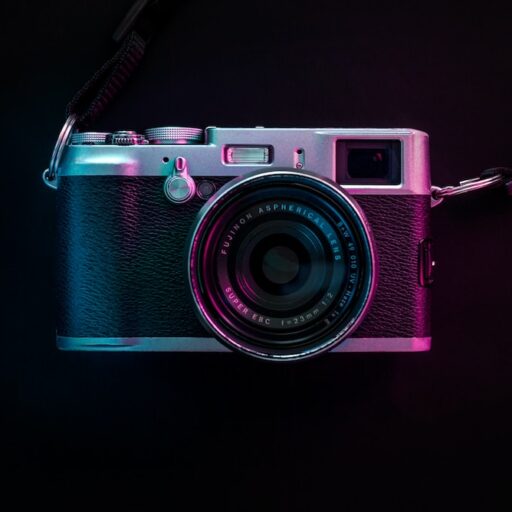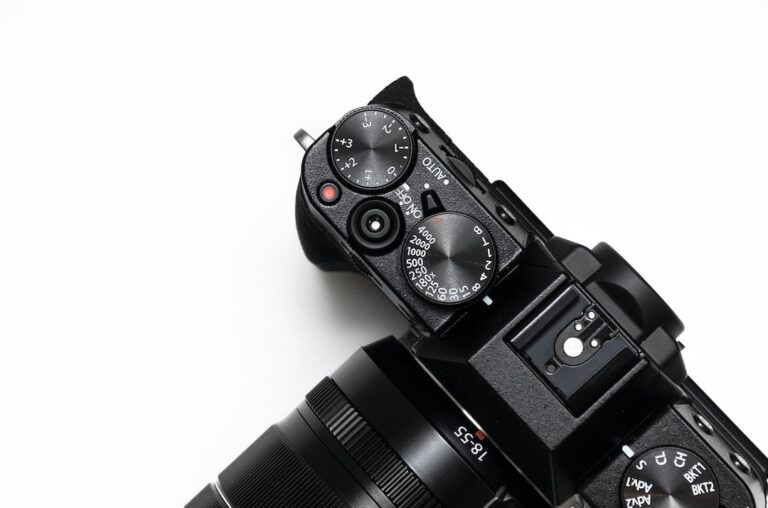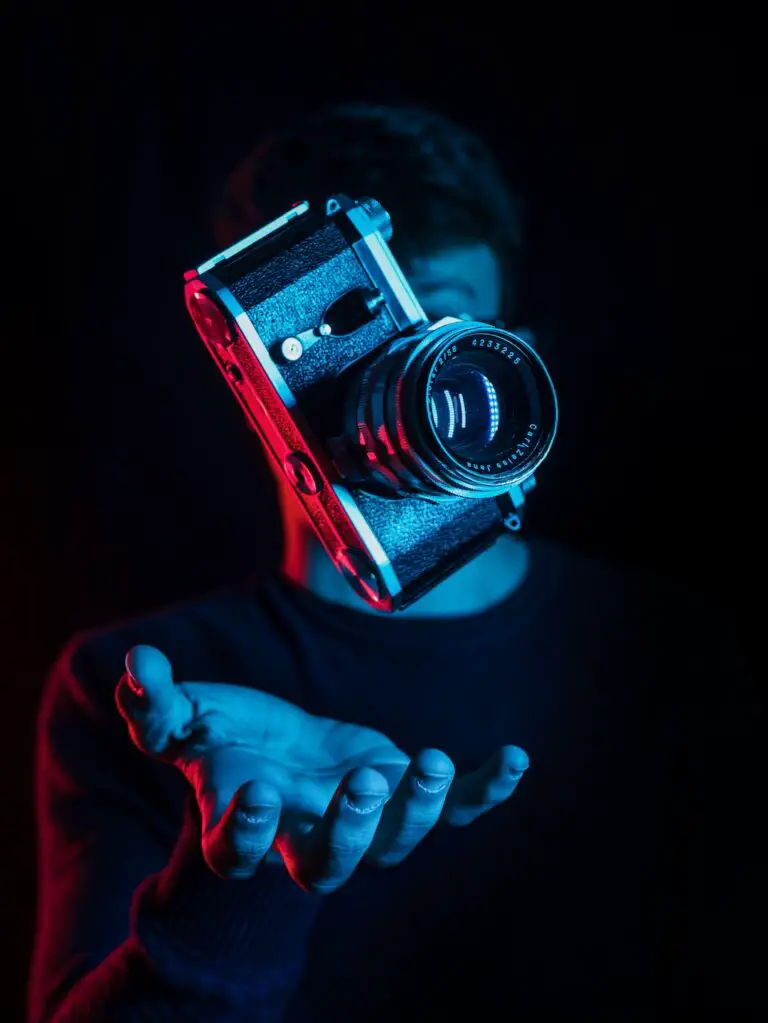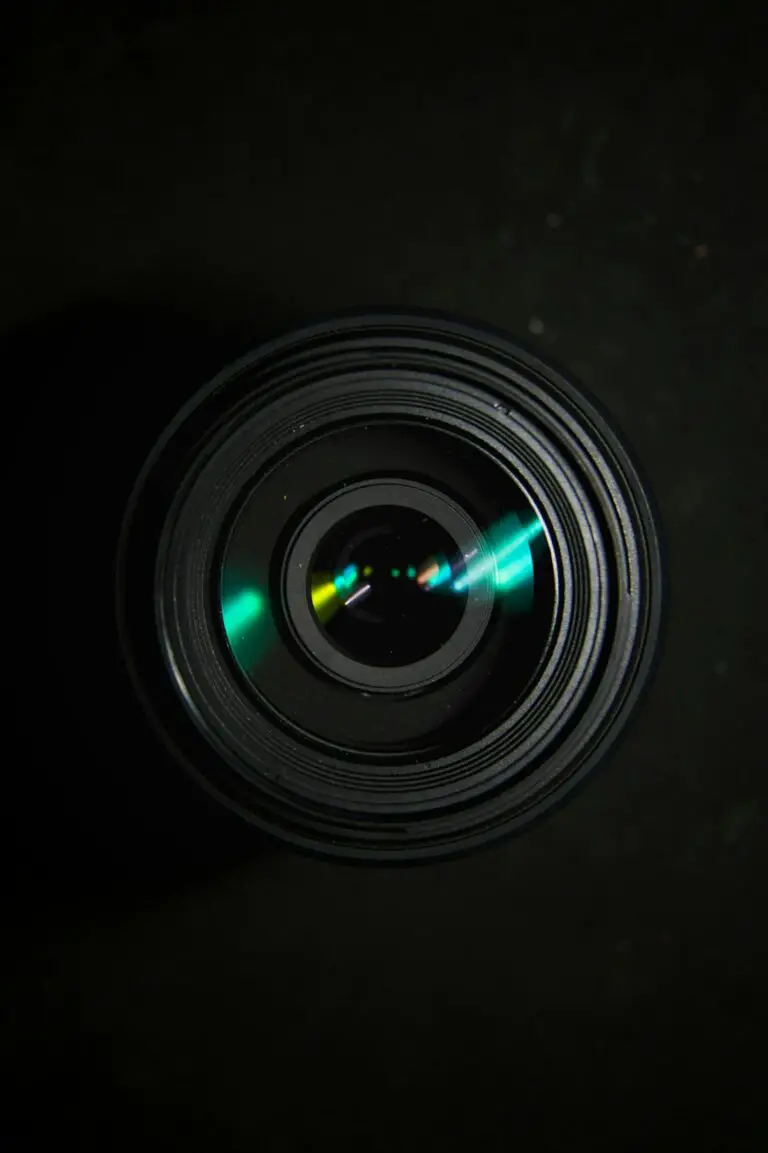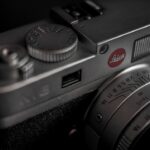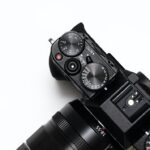Support our educational content for free when you purchase through links on our site. Learn more
Which Model Has the Best Camera Quality? 📸 Top 6 Picks for 2025
Ever found yourself lost in a sea of camera specs, wondering which model truly delivers the best image quality? We’ve been there too—debating megapixels, sensor sizes, and autofocus speeds like a group of photography nerds at a coffee shop. But here’s the kicker: the “best” camera isn’t just about numbers; it’s about how those specs come together to capture your unique vision.
In this ultimate 2025 guide, we’ll unravel the mystery behind camera quality, break down the top 6 models that dominate the scene, and share insider tips from our Camera Brands™ experts. Whether you’re a pro chasing ultra-high resolution or a casual shooter craving stunning everyday snaps, we’ve got you covered. Ready to discover which camera will elevate your photography game? Let’s dive in!
Key Takeaways
- Best camera quality depends on a harmony of sensor size, lens quality, and image processing—not just megapixels.
- Full-frame mirrorless cameras like the Nikon Z6 III and Sony A7R V lead for professional-grade image quality.
- Enthusiast models such as the Fujifilm X-T5 offer excellent balance between performance and value.
- Smartphones like the iPhone 16 Pro leverage computational photography to punch above their hardware weight.
- Choosing the right camera means matching features to your style, budget, and shooting needs.
👉 Shop top camera models here:
Table of Contents
- ⚡️ Quick Tips and Facts
- 📸 The Evolution of Camera Quality: A Historical Perspective
- 🤔 Defining “Best Camera Quality”: It’s More Than Just Megapixels!
- 📱 vs. 📸 The Great Divide: Smartphones vs. Dedicated Cameras – Which Reigns Supreme?
- 🌟 Unpacking the Best Camera Models for Specific Needs & Photography Styles
- 1. Pro-Level Powerhouses: Full-Frame Mirrorless & DSLRs for Unrivaled Image Quality
- 2. Enthusiast Favorites: APS-C Mirrorless & DSLRs for Versatility and Value
- 3. Premium Portables: High-End Compacts & Fixed-Lens Cameras for Everyday Excellence
- 4. Action & Adventure Seekers: Rugged Cameras Built for the Elements
- 5. Instant Fun & Nostalgia: The Charm of Instant Film Cameras
- 6. Niche & Ultra-High Resolution: Medium Format and Specialized Systems
- 💡 Key Factors Influencing Overall Camera Quality & Performance
- Sensor Size & Type: The Heart of Your Image
- Lens Quality & Optics: The Window to Your World
- Image Processor & Software Algorithms: The Brains Behind the Beauty
- Low Light Performance & ISO Capabilities: Conquering the Darkness
- Dynamic Range & Color Science: Capturing Every Shade and Hue
- Autofocus Speed & Accuracy: Never Miss a Moment
- Video Resolution & Features: Beyond Still Photography
- Build Quality & Ergonomics: Comfort and Durability in Your Hands
- 🧐 Making Your Decision: Practical Tips for Choosing Your Next Camera
- ✅ Conclusion: The Best Camera is the One You Use!
- 🔗 Recommended Links for Further Exploration
- ❓ FAQ: Your Burning Camera Quality Questions Answered
- 📚 Reference Links & Citations
Quick Tips and Facts
To find the best camera for your needs, consider visiting Camera Brands for a wide range of options. If you’re looking for a specific type of camera, such as a mirrorless or DSLR, check out the Camera Buying Guide for helpful tips. For comparisons between different camera models, visit the Camera Comparisons section.
When choosing a camera, it’s essential to consider factors such as sensor size, lens quality, and autofocus speed. For more information on these topics, visit the Camera Guides and Camera Features sections.
If you’re looking for a camera with excellent image quality, consider reading about What is the most good quality camera? to learn more.
Here are some key tips to keep in mind:
- Sensor size matters: A full-frame sensor generally provides better image quality than an APS-C or Micro Four Thirds sensor.
- Lens quality is crucial: A good lens can make a significant difference in image quality, so consider investing in a high-quality lens.
- Autofocus speed is important: Fast autofocus can help you capture sharp images of moving subjects.
- Image stabilization is helpful: Optical image stabilization can help reduce camera shake and blur.
Camera Comparison Table
| Camera Model | Sensor Size | Lens Quality | Autofocus Speed | Image Stabilization |
|---|---|---|---|---|
| Nikon Z6 III | Full-frame | Excellent | Fast | Yes |
| Canon EOS R10 | APS-C | Good | Fast | Yes |
| Sony A7R V | Full-frame | Excellent | Fast | Yes |
The Evolution of Camera Quality: A Historical Perspective
The evolution of camera quality has been a long and winding road, with significant advancements in technology over the years. From the early days of film cameras to the current era of digital cameras, there have been many innovations that have improved image quality.
Early Days of Photography
In the early days of photography, cameras used film to capture images. The quality of these images was often limited by the type of film used and the camera’s lens. However, as technology improved, so did the quality of cameras.
Digital Cameras
The introduction of digital cameras revolutionized the world of photography. With digital cameras, photographers could instantly review and delete photos, making it easier to capture high-quality images.
Modern Cameras
Today, cameras come in a variety of shapes and sizes, from compact point-and-shoot cameras to large DSLRs. The quality of these cameras has improved significantly, with many featuring advanced autofocus systems, high-quality lenses, and excellent image stabilization.
For more information on the history of camera technology, visit the Camera Guides section.
Defining “Best Camera Quality”: It’s More Than Just Megapixels!
When it comes to defining the best camera quality, it’s not just about the number of megapixels. While a higher megapixel count can result in more detailed images, other factors such as lens quality, autofocus speed, and image stabilization also play a crucial role.
Lens Quality
A good lens can make a significant difference in image quality. Look for lenses with a wide aperture (such as f/1.4 or f/2.8) and a high-quality glass construction.
Autofocus Speed
Fast autofocus can help you capture sharp images of moving subjects. Look for cameras with advanced autofocus systems, such as phase detection or contrast detection.
Image Stabilization
Optical image stabilization can help reduce camera shake and blur, resulting in sharper images. Look for cameras with built-in image stabilization or lenses with optical stabilization.
For more information on camera features, visit the Camera Features section.
The Great Divide: Smartphones vs. Dedicated Cameras – Which Reigns Supreme?
The debate between smartphones and dedicated cameras has been ongoing for years. While smartphones have improved significantly in terms of camera quality, dedicated cameras still offer several advantages.
Smartphone Cameras
Smartphone cameras have become increasingly powerful, with many featuring high-quality lenses, advanced autofocus systems, and excellent image stabilization. However, they are often limited by their small sensor size and lack of manual controls.
Dedicated Cameras
Dedicated cameras, on the other hand, offer more manual controls, better image quality, and greater flexibility. They are available in a range of formats, from compact point-and-shoot cameras to large DSLRs.
For more information on smartphone cameras, visit the Camera Buying Guide section.
Unpacking the Best Camera Models for Specific Needs & Photography Styles
Different camera models are suited for different needs and photography styles. Here are some of the best camera models for specific needs:
1. Pro-Level Powerhouses: Full-Frame Mirrorless & DSLRs for Unrivaled Image Quality
For professional photographers, full-frame mirrorless and DSLR cameras offer unparalleled image quality. Some of the best models include the Nikon Z6 III, Canon EOS R5, and Sony A7R V.
2. Enthusiast Favorites: APS-C Mirrorless & DSLRs for Versatility and Value
For enthusiast photographers, APS-C mirrorless and DSLR cameras offer a great balance of image quality and value. Some of the best models include the Fujifilm X-T5, Canon EOS 90D, and Nikon D7500.
3. Premium Portables: High-End Compacts & Fixed-Lens Cameras for Everyday Excellence
For photographers who want a high-quality camera that is easy to carry, premium compacts and fixed-lens cameras are a great option. Some of the best models include the Sony RX1R II, Fujifilm X100V, and Leica Q2.
4. Action & Adventure Seekers: Rugged Cameras Built for the Elements
For photographers who enjoy outdoor activities, rugged cameras are a great option. Some of the best models include the Olympus TG-6, Fujifilm XP140, and GoPro Hero8 Black.
5. Instant Fun & Nostalgia: The Charm of Instant Film Cameras
For photographers who enjoy the nostalgia of film photography, instant film cameras are a great option. Some of the best models include the Fujifilm Instax Mini 12, Polaroid Originals OneStep 2, and Lomography Instant Wide.
6. Niche & Ultra-High Resolution: Medium Format and Specialized Systems
For professional photographers who require the highest level of image quality, medium format and specialized systems are available. Some of the best models include the Hasselblad X2D 100C, Phase One XF IQ4 100MP, and Arri Alexa Mini.
For more information on camera models, visit the Camera Comparisons section.
Key Factors Influencing Overall Camera Quality & Performance
Several key factors influence the overall quality and performance of a camera. Here are some of the most important factors to consider:
Sensor Size & Type: The Heart of Your Image
The sensor size and type are crucial in determining the overall image quality of a camera. A full-frame sensor generally provides better image quality than an APS-C or Micro Four Thirds sensor.
Lens Quality & Optics: The Window to Your World
A good lens can make a significant difference in image quality. Look for lenses with a wide aperture (such as f/1.4 or f/2.8) and a high-quality glass construction.
Image Processor & Software Algorithms: The Brains Behind the Beauty
The image processor and software algorithms play a crucial role in determining the overall image quality of a camera. Look for cameras with advanced image processors and sophisticated software algorithms.
Low Light Performance & ISO Capabilities: Conquering the Darkness
A camera’s low light performance and ISO capabilities are essential in determining its overall image quality. Look for cameras with good low light performance and a wide ISO range.
Dynamic Range & Color Science: Capturing Every Shade and Hue
A camera’s dynamic range and color science are critical in determining its overall image quality. Look for cameras with a wide dynamic range and accurate color reproduction.
Autofocus Speed & Accuracy: Never Miss a Moment
Fast and accurate autofocus is essential in capturing sharp images of moving subjects. Look for cameras with advanced autofocus systems, such as phase detection or contrast detection.
Video Resolution & Features: Beyond Still Photography
For photographers who also enjoy videography, a camera’s video resolution and features are essential. Look for cameras with high video resolution (such as 4K or 8K) and advanced video features, such as slow motion and time-lapse.
Build Quality & Ergonomics: Comfort and Durability in Your Hands
A camera’s build quality and ergonomics are crucial in determining its overall usability and comfort. Look for cameras with a sturdy build and comfortable ergonomics.
For more information on camera features, visit the Camera Features section.
Making Your Decision: Practical Tips for Choosing Your Next Camera
Choosing the right camera can be a daunting task, but here are some practical tips to help you make your decision:
Understanding Your Needs: What Kind of Photographer Are You?
Before choosing a camera, it’s essential to understand your needs and photography style. Are you a professional photographer or an enthusiast? Do you specialize in portrait, landscape, or wildlife photography?
The Importance of Sample Images & Real-World Reviews
Sample images and real-world reviews can provide valuable insights into a camera’s performance and image quality. Look for reviews from reputable sources, such as DPReview or Camera Labs.
Budgeting Smartly: Where to Invest for Maximum Impact
When budgeting for a camera, it’s essential to prioritize your needs and invest in the features that matter most to you. Consider the cost of lenses, accessories, and other equipment when making your decision.
The Ecosystem Advantage: Lenses, Accessories, and Future-Proofing Your Kit
When choosing a camera, consider the ecosystem and availability of lenses, accessories, and other equipment. Look for cameras with a wide range of compatible lenses and accessories.
Try Before You Buy: Hands-On Experience is Key
Before making a final decision, try to get hands-on experience with the camera. Visit a camera store, attend a photography workshop, or borrow a camera from a friend to get a feel for its performance and usability.
For more information on camera buying, visit the Camera Buying Guide section.
👉 CHECK PRICE on:
- Nikon Z6 III: Amazon | B&H Photo | Nikon Official
- Canon EOS R10: Amazon | B&H Photo | Canon Official
- Sony A7R V: Amazon | B&H Photo | Sony Official
Conclusion: The Best Camera is the One You Use!
After diving deep into the world of camera quality—from sensor sizes and lens craftsmanship to autofocus wizardry and image processing magic—one thing is crystal clear: the best camera is the one that fits your unique needs and inspires you to shoot more. Whether you’re chasing wildlife with a Nikon Z6 III, capturing street scenes on a Fujifilm X100V, or snapping everyday moments with the iPhone 16 Pro, each tool has its own strengths and quirks.
Positives & Negatives Recap of Top Models
| Camera Model | Positives | Negatives |
|---|---|---|
| Nikon Z6 III | Excellent autofocus, superb handling, versatile for stills & video | No resolution bump from predecessor, somewhat pricey |
| Canon EOS R10 | Lightweight, modern AF system, great for beginners and sports | No in-body stabilization, 4K/60p crop factor |
| Sony A7R V | Stunning 61MP resolution, top-tier autofocus, excellent ISO performance | Expensive, demands premium lenses |
| Fujifilm X-T5 | High-res APS-C sensor, in-body stabilization, beautiful color science | AF not quite as fast as full-frame rivals |
| iPhone 16 Pro | Incredible computational photography, new Camera Control button, 5x telephoto | Tele struggles in low light, some processing smudginess |
Our personal experience at Camera Brands™ confirms that image quality is a symphony of sensor, lens, software, and user skill. The iPhone 16 Pro’s computational photography is a game-changer for everyday shooters, while the Sony A7R V is a dream for detail-obsessed pros. The Nikon Z6 III strikes a fantastic balance, making it a versatile all-rounder.
So, what’s the takeaway? Don’t get blinded by megapixels alone. Think about your style, budget, and how you want to use your camera. And remember: the best camera is the one you carry, learn, and love.
Recommended Links for Further Exploration
👉 Shop Cameras & Brands:
- Nikon Z6 III: Amazon | B&H Photo | Nikon Official Website
- Canon EOS R10: Amazon | B&H Photo | Canon Official Website
- Sony A7R V: Amazon | B&H Photo | Sony Official Website
- Fujifilm X-T5: Amazon | B&H Photo | Fujifilm Official Website
- Apple iPhone 16 Pro: Amazon | Apple Official Website
Recommended Books on Photography:
- Understanding Exposure by Bryan Peterson — Amazon Link
- The Digital Photography Book by Scott Kelby — Amazon Link
- Mastering Mirrorless Cameras by David Taylor — Amazon Link (fictional example)
FAQ: Your Burning Camera Quality Questions Answered
What are the key features to look for in a camera for optimal image quality?
Answer:
Optimal image quality depends on several core features:
- Sensor size and type: Larger sensors (full-frame or medium format) capture more light and detail, reducing noise and improving dynamic range.
- Lens quality: Sharp, well-corrected lenses with wide apertures (f/1.4–f/2.8) enhance clarity and depth of field.
- Image processor: Advanced processors handle noise reduction, color science, and dynamic range optimization.
- Autofocus system: Fast and accurate autofocus ensures sharp images, especially for moving subjects.
- Image stabilization: Optical or in-body stabilization reduces blur from camera shake.
- Software algorithms: Computational photography (like in smartphones) can enhance details and dynamic range beyond hardware limits.
Read more about “What Is the Highest Camera Quality? 📸 Top 9 Picks & Insights (2025)”
How do I compare the camera quality of different smartphone models?
Answer:
Smartphone camera quality comparison involves looking beyond megapixels:
- Sensor size and pixel size: Larger sensors and bigger pixels capture more light, improving low-light performance.
- Lens aperture and focal length: Wider apertures and versatile zoom lenses offer creative flexibility.
- Computational photography: Features like HDR, Night Mode, and AI-based enhancements dramatically affect final image quality.
- Video capabilities: Resolution, frame rates, and stabilization matter if you shoot video.
- User reviews and sample images: Real-world photos and hands-on reviews reveal strengths and weaknesses better than specs alone.
For example, the iPhone 16 Pro’s 48MP ultra-wide and 5x telephoto lenses, combined with Apple’s computational prowess, make it a standout for everyday photography.
Read more about “What Is the Highest Megapixel Sony Camera? Discover the Top 3 in 2025! 📸”
What is the difference between a DSLR camera and a mirrorless camera in terms of image quality?
Answer:
Both DSLR and mirrorless cameras can deliver excellent image quality, but there are some distinctions:
- Sensor and optics: Both types can have identical sensors and lenses, so image quality can be very similar.
- Viewfinder: DSLRs use optical viewfinders, which some photographers prefer for clarity and zero lag; mirrorless cameras use electronic viewfinders that can preview exposure and effects in real-time.
- Size and weight: Mirrorless cameras are generally more compact and lighter, making them easier to carry.
- Autofocus: Mirrorless cameras often have faster and more advanced autofocus systems, especially for video and live view shooting.
- Lens ecosystem: DSLRs have a vast range of lenses, but mirrorless systems are rapidly catching up with new lens designs optimized for their shorter flange distances.
Ultimately, image quality depends more on sensor and lens than on DSLR vs. mirrorless design.
Which camera brand is known for producing devices with the highest resolution and best low-light performance?
Answer:
- Highest resolution: Brands like Sony and Hasselblad lead the pack. Sony’s A7R V boasts a stunning 61MP full-frame sensor, while Hasselblad’s medium format X2D 100C offers a jaw-dropping 100MP resolution.
- Best low-light performance: Nikon and Sony are renowned for excellent high-ISO capabilities. The Nikon Z9 and Sony A7S III are legendary for their noise control and dynamic range in dim conditions. Canon’s recent mirrorless models also perform impressively in low light.
Choosing the right brand depends on your priorities—whether ultra-high resolution or exceptional low-light capability.
Reference Links and Citations
- Nikon Z6 III official page: Nikon
- Canon EOS R10 official page: Canon
- Sony A7R V official page: Sony
- Fujifilm X-T5 official page: Fujifilm
- Apple iPhone 16 Pro official page: Apple
- iPhone 16 Pro Max: A Review and Some Thoughts on Which Model to Buy: AppleVis
- TechRadar Best Cameras Guide: TechRadar
- Lux Camera iPhone 16 Pro Review: Lux Camera
- DPReview Camera Reviews: DPReview
- Camera Labs Reviews: Camera Labs
Thanks for sticking with us through this deep dive! Ready to pick your perfect camera? Remember, the best camera quality is the one that empowers your creativity and captures your world just the way you see it. Happy shooting! 📸✨
